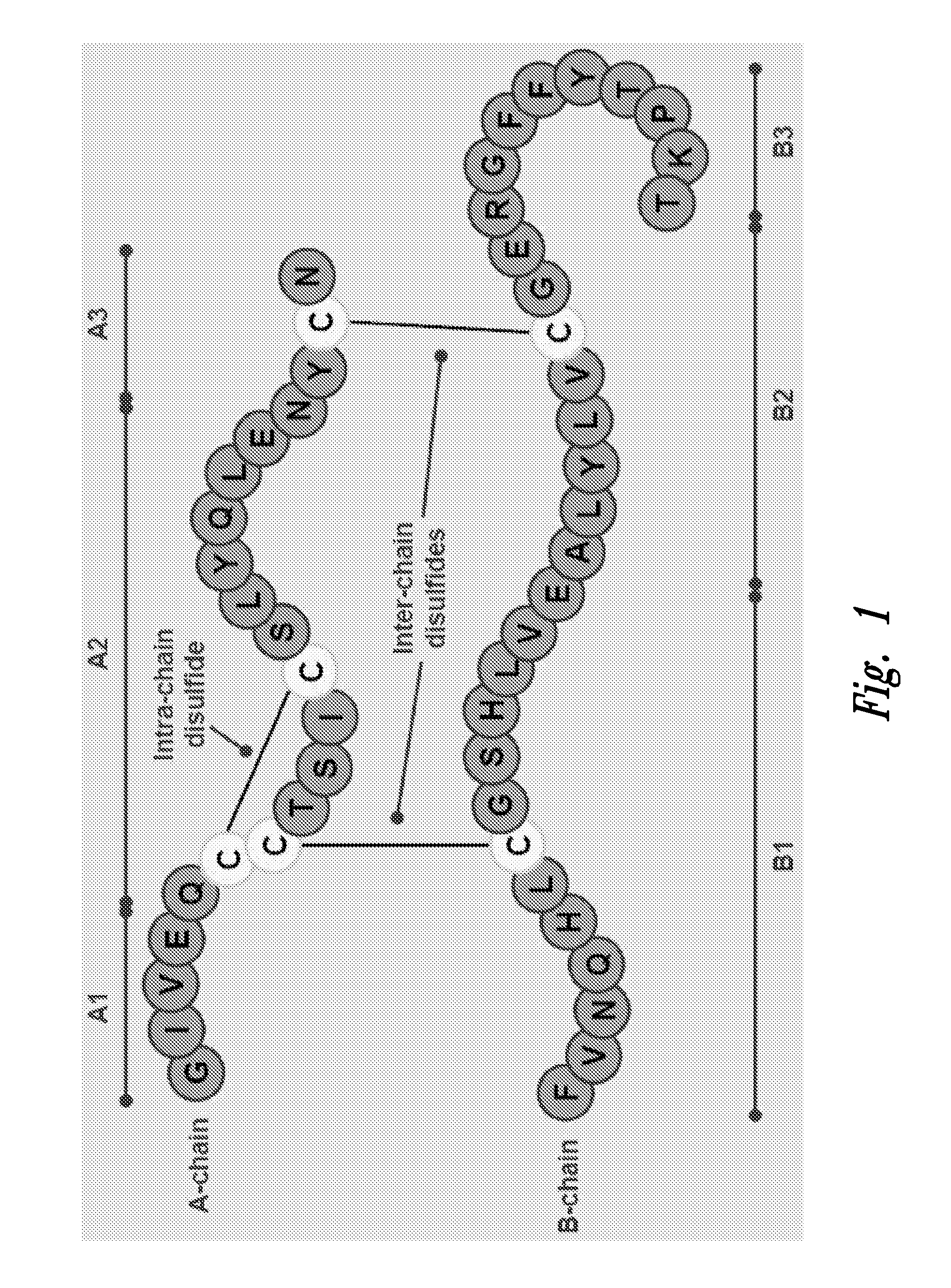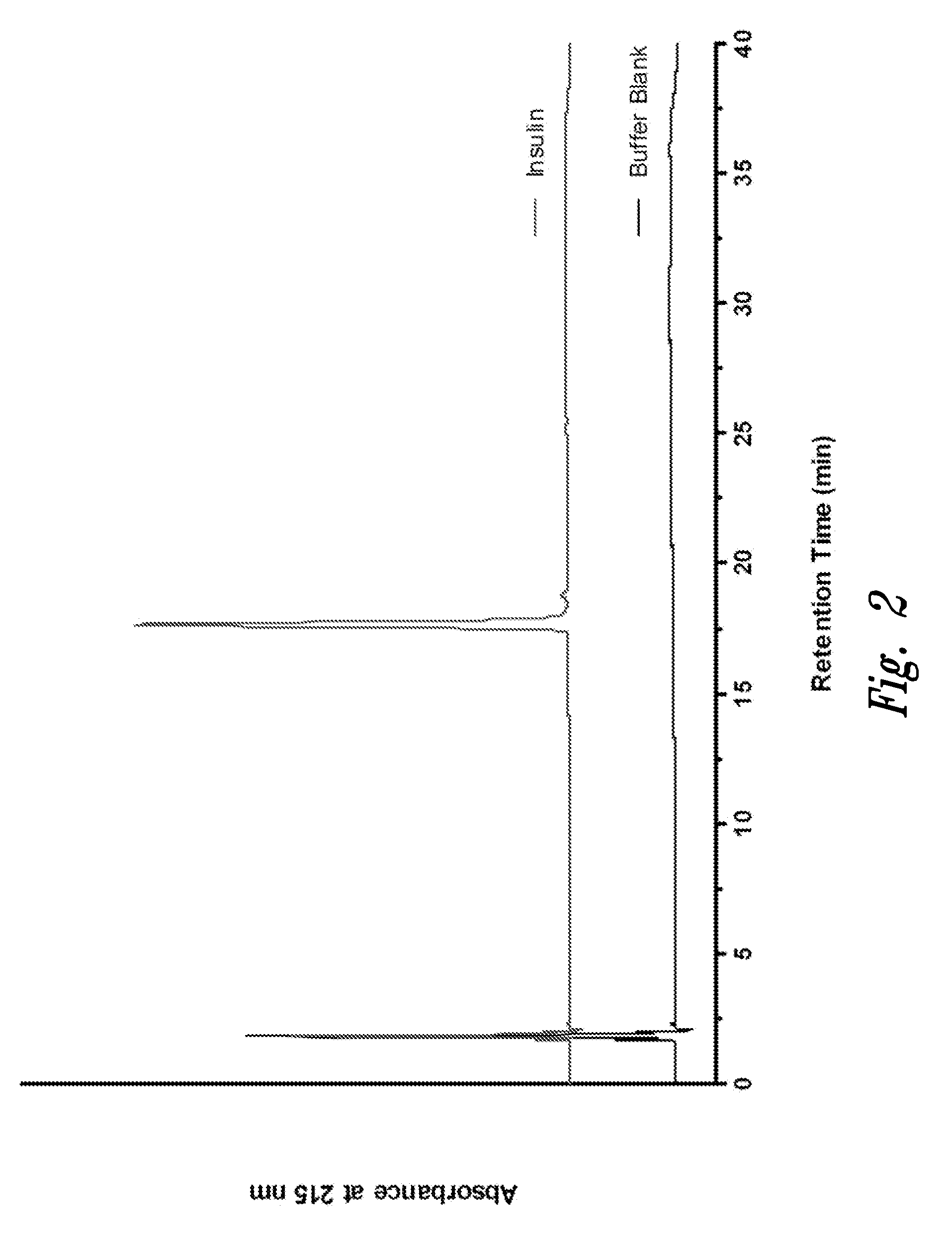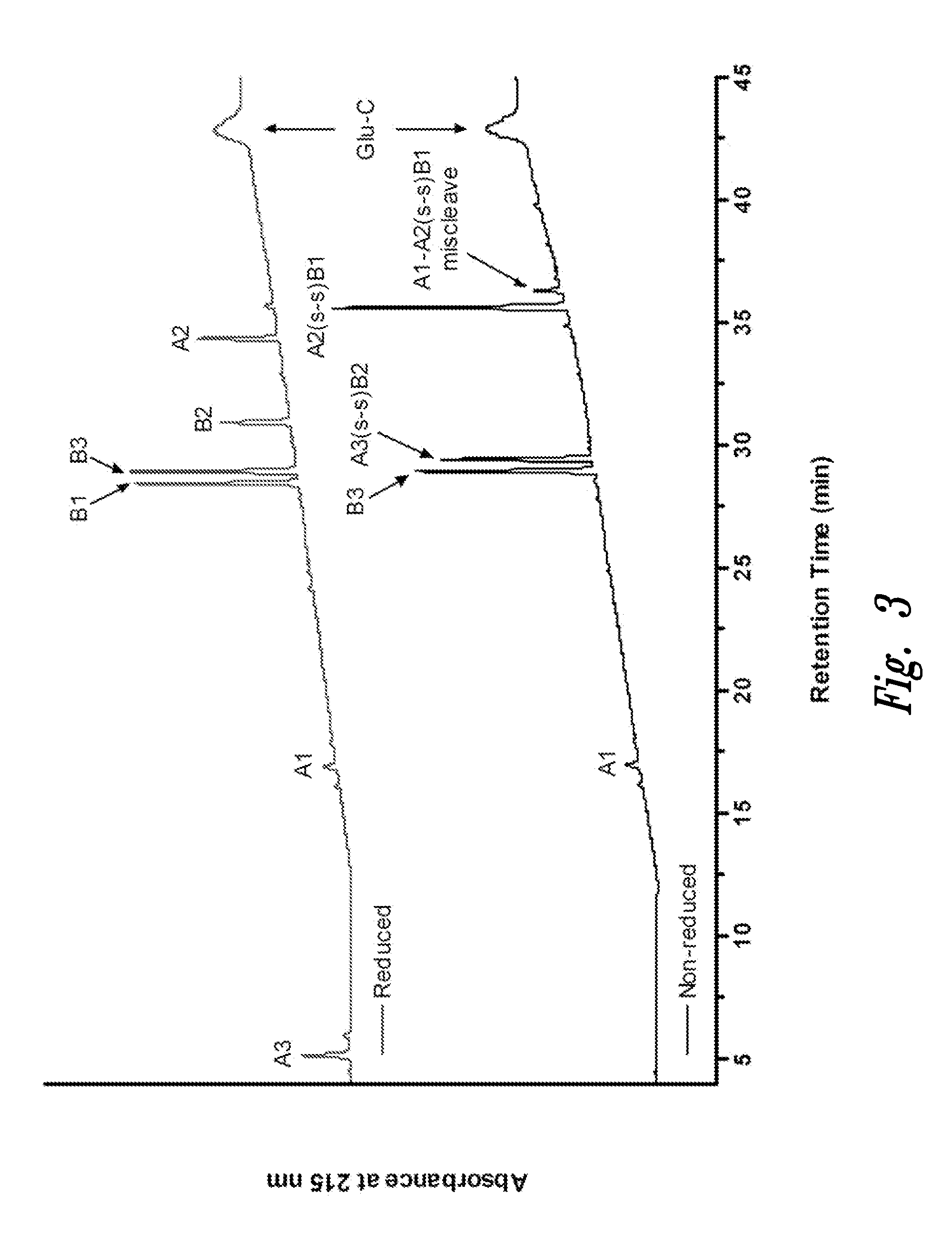Polypeptide disulfide bond analysis
a polypeptide and disulfide bond technology, applied in the field of polypeptide disulfide bond analysis, can solve the problems of significant challenges to elucidation of disulfide structure, large amount of potentially limited sample, and time-consuming optimization steps, and achieve simple, rapid and accurate measurement of disulfide bonds. , the effect of high throughpu
- Summary
- Abstract
- Description
- Claims
- Application Information
AI Technical Summary
Benefits of technology
Problems solved by technology
Method used
Image
Examples
example 1
Materials
[0103]Recombinant human Insulin was sourced from Invitrogen (Carlsbad, Calif.), and insulin oxidized B-chain was from Sigma-Aldrich (St. Louis, Mo.). Endoproteinase Glu-C (protease V 8, Staphylococcus aureus V 8), sequencing grade was purchased from Roche (Indianapolis, Ind.). Reagents for manual execution of Edman sequencing including trifluoroacetic acid (TFA), phenylisothiocyanate (PITC), and N-methylpiperidine / water / methanol solution, were sequencing grade materials obtained from Applied Biosystems (Foster City, Calif.). Pyridine was ACS reagent grade from Fluka (Buchs, Switzerland). Pre-prepared mobile phases (0.1% TFA in water, and 0.1% TFA in acetonitrile), as well as HPLC-grade water, were from J. T. Baker, (Phillipsburg, N.J.).
[0104]Tris solution (1 M, pH 8.0) was from Calbiochem (La Jolla, Calif.), tris(2-carboxyethyl)phosphine (TCEP) was purchased from Pierce (Rockford, Ill.), and guanidine hydrochloride solution (8 M), iodoacetic acid (IAA), and N-ethylmaleimide...
example 2
Materials
[0138]The recombinant human IgG2 monoclonal antibody was expressed with κ-type light chains and γ2-type heavy chains. The antibody was produced from Chinese hamster ovary (CHO) cell culture and purified using established techniques (Shukla et al., J. Chromatogr. B. 2007 848, 28-39).
[0139]Endoprotease Lys-C was sourced from Wako Chemicals (Richmond Va.), and endoproteinase Glu-C (sequencing grade) was purchased from Roche (Indianapolis, Ind.).
[0140]Reagents for manual execution of Edman sequencing including trifluoroacetic acid (TFA), phenylisothiocyanate (PITC), and N-methylpiperidine / water / methanol solution, were sequencing grade materials obtained from Applied Biosystems (Foster City, Calif.). Pyridine was ACS reagent grade from Fluka (Buchs, Switzerland). Pre-prepared mobile phases (0.1% TFA in water, and 0.1% TFA in acetonitrile), as well as HPLC-grade water, n-propanol, were from J. T. Baker, (Phillipsburg, N.J.). Tris was from Calbiochem (La Jolla, Calif.); tris(2-car...
PUM
| Property | Measurement | Unit |
|---|---|---|
| pH | aaaaa | aaaaa |
| concentration | aaaaa | aaaaa |
| concentration | aaaaa | aaaaa |
Abstract
Description
Claims
Application Information
 Login to View More
Login to View More - R&D
- Intellectual Property
- Life Sciences
- Materials
- Tech Scout
- Unparalleled Data Quality
- Higher Quality Content
- 60% Fewer Hallucinations
Browse by: Latest US Patents, China's latest patents, Technical Efficacy Thesaurus, Application Domain, Technology Topic, Popular Technical Reports.
© 2025 PatSnap. All rights reserved.Legal|Privacy policy|Modern Slavery Act Transparency Statement|Sitemap|About US| Contact US: help@patsnap.com



